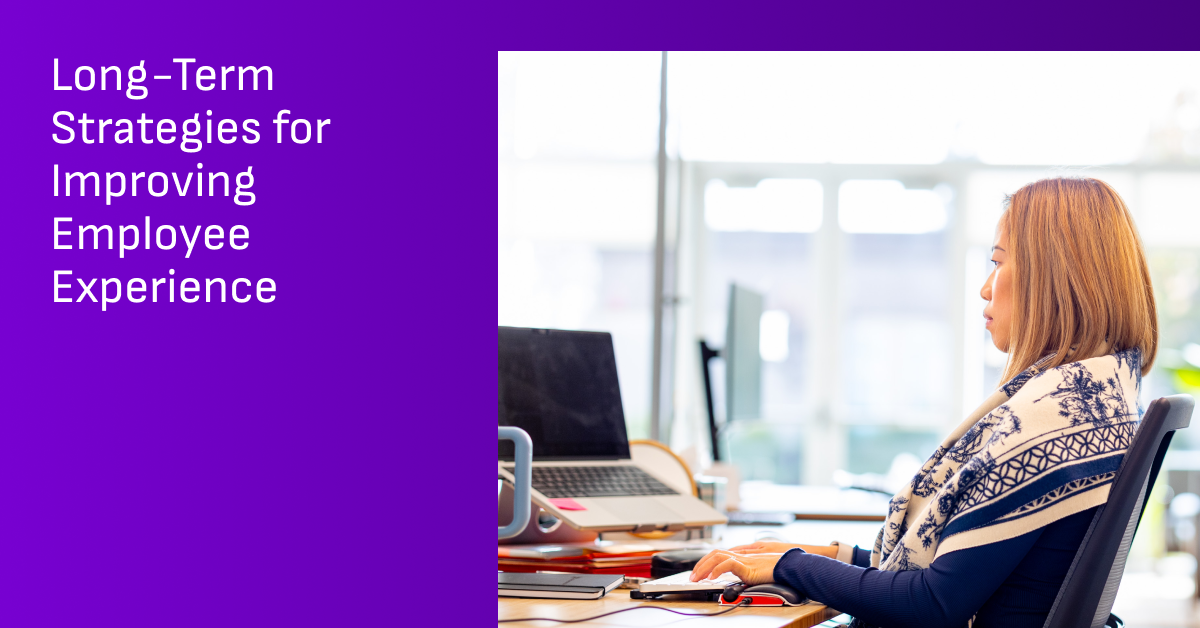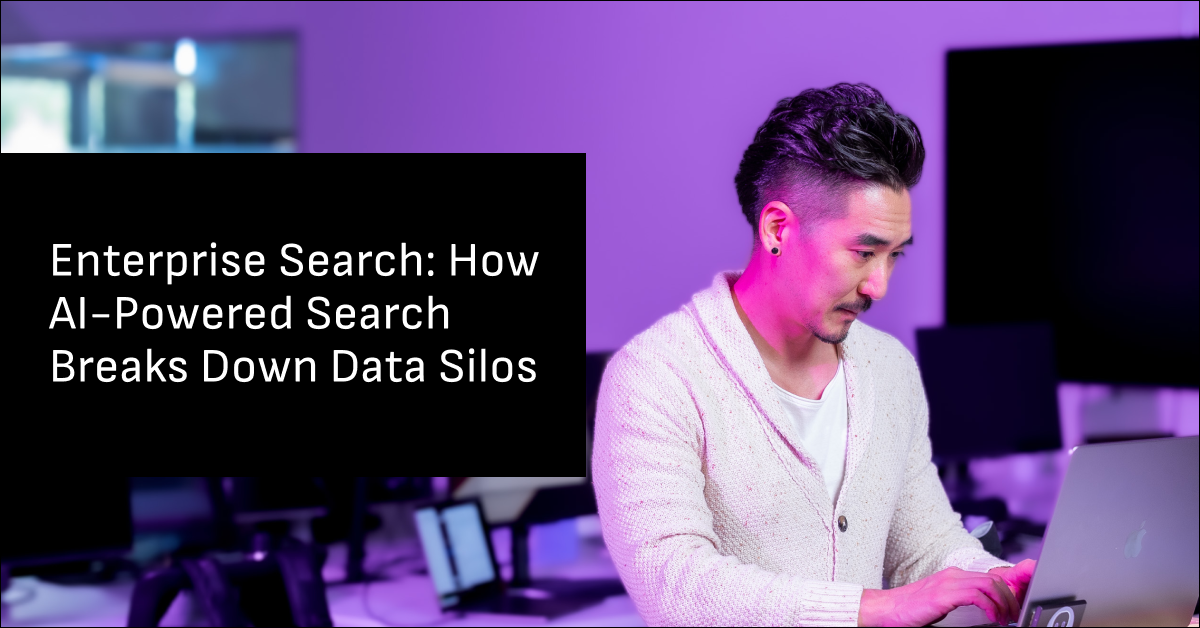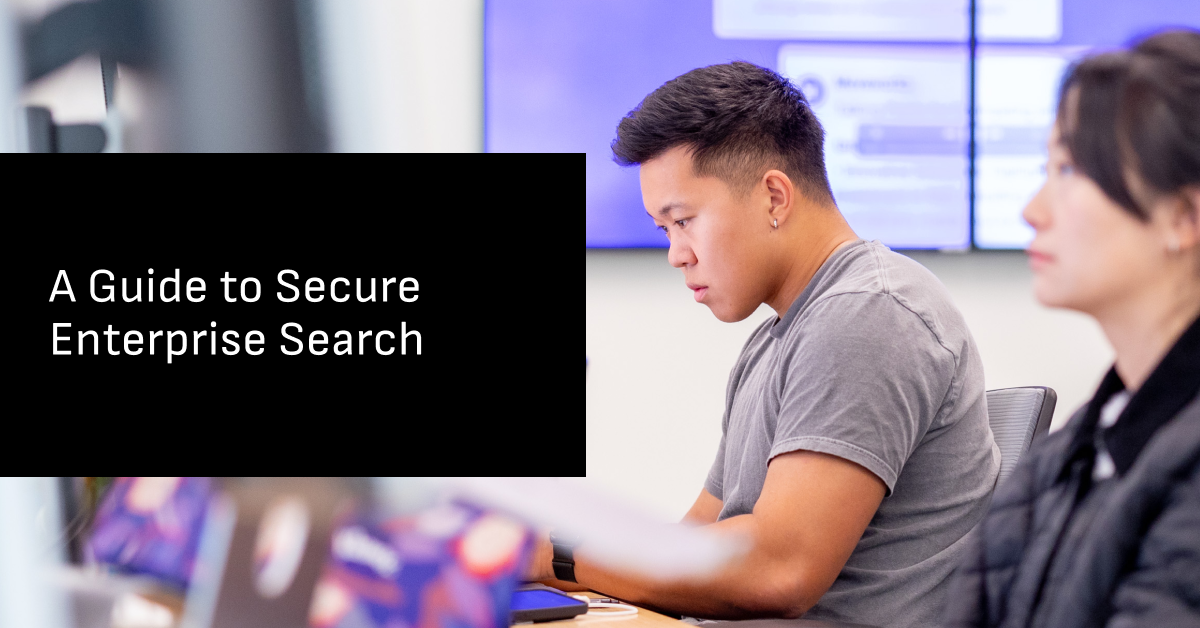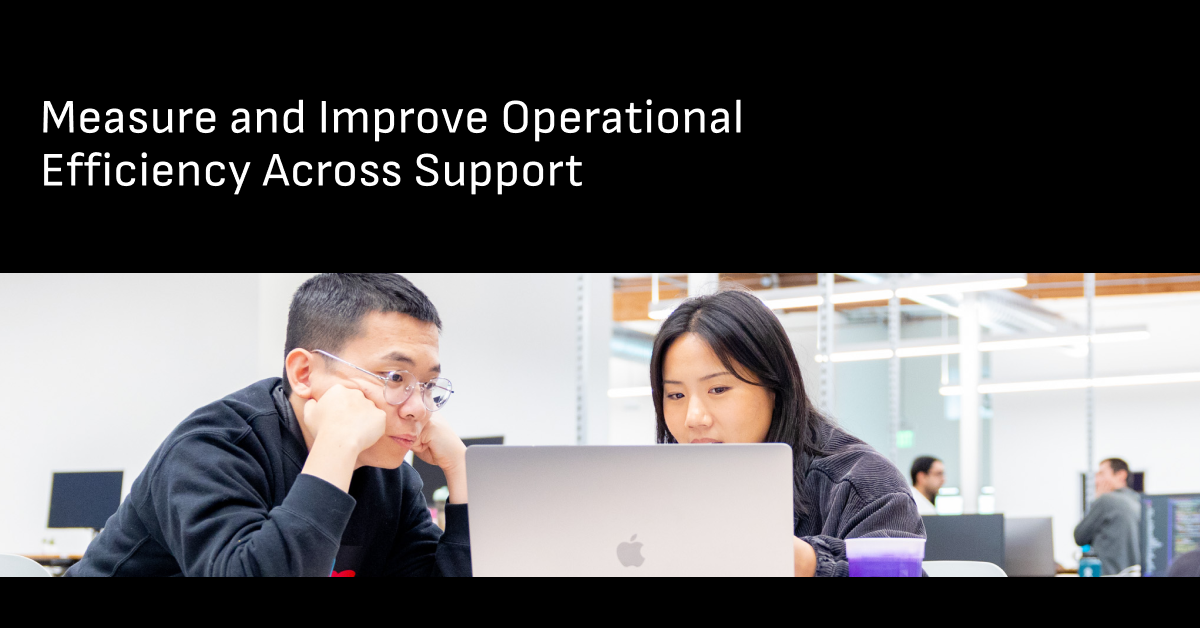Highlights
- Employee expectations have changed—Today’s workforce demands instant, personalized, consumer-grade support across IT, HR, and daily work needs, but most enterprises are held back by siloed tools, disconnected data, and slow, reactive feedback cycles.
- The cost of poor employee experience is massive—Disengagement drives down productivity and profitability. Gallup estimates that raising global engagement to 100% would unlock $9.6 trillion in productivity, highlighting the direct link between experience and business performance.
- Manual support doesn’t scale—Reliance on human teams for routine tasks like password resets or PTO questions creates bottlenecks, inconsistent answers, and frustrated employees, while overwhelming support staff.
- AI—especially agentic AI—makes experiences proactive and scalable—Unlike rule-based automation or siloed AI, agentic AI autonomously supports employee interactions, triggers real-time actions and integrates across systems to deliver personalized, end-to-end employee experiences.
- AI improves every stage of the employee lifecycle—From recruitment and onboarding through career growth, daily support, and offboarding, AI helps to eliminate friction, drive efficiency, and enable consistent, engaging experiences at scale.
With hybrid and digital-first workplaces becoming the norm, your people expect the same level of instant, personalized support they get as consumers. They want quick answers to IT questions, easy access to HR benefits, and support that actually aligns with their specific role and location.
But the simple fact is this: Many organizations simply don’t have the right solutions and processes in place to deliver a great employee experience.
They’re managing an endless list of disconnected tools, platforms, and systems, limiting visibility into where employees actually get stuck. Add in slow feedback cycles and growing expectations for 24/7 support, and it's clear why traditional approaches to employee experience aren’t working anymore.
But a poor employee experience doesn’t just affect your company culture and retention rates. It ultimately results in disengaged employees, and disengagement hits your bottom line—hard.
In fact, Gallup’s 2025 State of the Global Workplace report found that, while engaged employees lead directly to increased profitability and productivity, only 21% of the global workforce is actively engaged. If we could reach 100% engagement worldwide, it would add $9.6 trillion in productivity to the global economy—just imagine what it could do for your organization.
Why employee experience matters now
Hybrid and digital-first workplaces have exposed the cracks in traditional support models. Employees expect workplace support to be as seamless and personalized as consumer apps—instant, contextual, and available 24/7. Without that, frustration builds, productivity lags, and turnover rises.
That's exactly where AI-powered employee experience solutions lend their digital hand. By automating routine support, delivering instant answers, and providing real-time visibility into employee friction points, AI can help you create scalable, personalized employee experiences and reduce pressure on your support teams.
The enterprise employee experience is getting harder to manage
Employee experience is the sum of every interaction an employee has with their organization—from onboarding and daily work to career development opportunities and offboarding. It encompasses both the functional side (tools, processes, systems) and the emotional side (trust, clarity, belonging). When these work together, employees can focus on meaningful work instead of battling operational friction.
Many companies confuse employee experience with employee engagement. Engagement is an outcome—how employees feel about their work. Experience is the input—the daily systems, support, and processes that shape that feeling. Positive experiences drive higher engagement, productivity, and retention.
An engaging employee lifecycle might look something like:
- A smooth employee onboarding process that gets people productive quickly
- Responsive daily support for IT and HR needs
- Growth opportunities through training and professional development
- Easy transitions during organizational changes
- Positive offboarding experiences
But end-to-end employee experience management is harder than ever, thanks to:
- Global and distributed teams: Remote and hybrid work models mean employees need support across different time zones, devices, and work environments.
- Expansion of digital tools and platforms: Enterprises use over 1,000 applications on average, which creates confusion about where to find information or complete tasks.
- Disconnected data and workflows: Employee information lives in different silos across human resources systems, IT service management platforms, and collaboration tools, making it hard to provide personalized support.
- Limited visibility and slow feedback cycles: Traditional engagement surveys only capture sentiment at specific moments, often too late to prevent issues from escalating.
- Growing expectations for instant, personalized support: Employees expect the same level of service they receive as consumers, which comes with immediate, relevant support that's available 24/7.
Avoiding the most common missteps with employee experience strategies
Plenty of organizations recognize the importance of employee experience, but many of them wind up struggling with the actual execution. So let’s look at the most frequent pitfalls and how to build a more effective approach for your organization.
Siloed initiatives lack cohesion
When different departments launch disconnected employee experience projects, it can lead to inconsistent support that confuses employees instead of helping them. IT might deploy a new service portal while HR launches a separate benefits chatbot, creating multiple touchpoints that don't communicate with each other.
Without a unified strategy or shared data, these well-meaning initiatives may fall short of fully meeting employee needs. They might end up navigating multiple systems, repeating information, and getting different answers depending on which team or system they interact with.
Feedback is reactive and limited—and often arrives too late
Traditional employee surveys provide valuable insights, but they're essentially snapshots of sentiment at specific moments. By the time you collect, analyze, and act on survey results, the issues that prompted negative feedback may have already caused lasting damage to employee engagement and retention.
This reactive approach means you're always playing catch-up instead of proactively addressing pain points in your employees' day-to-day. Without real-time visibility to support those kinds of issues, it's hard for leaders to prioritize effectively and take action before small problems become major issues.
Manual support doesn't scale
Relying on human team members to handle routine requests like password resets, PTO policy questions, and software access creates bottlenecks that slow down resolutions and frustrate employees.
As your company expands, these inefficiencies become impossible to ignore, negatively impacting the employee experience and overwhelming your support teams with redundant, tedious, and, let’s face it, boring tasks.
Manual processes also create inconsistency. Different representatives may provide different answers to the same question, or response times might look wildly different day to day based on current workload and time zones.
How AI automation enables scalable, personalized employee experiences
AI has emerged as the clear solution to scale support across IT, HR, and day-to-day workflows. Unlike manual or siloed approaches, AI can:
- Automate routine requests instantly, like password resets and PTO balance questions.
- Deliver help where employees already work, inside Slack, Microsoft Teams, or other collaboration tools.
- Personalize support by understanding role, location, and context.
- Provide continuous insights into employee friction points, helping leaders act before problems escalate.
Agentic AI goes a step further. It’s able to plan, reason, and act to proactively trigger real-time workflows, and orchestrate processes across systems. This makes the experience seamless for employees—and scalable for enterprises.
The evolution of AI in employee experience
AI's evolution has helped to move this strategy forward:
- Traditional automation solutions automate simple tasks, like sending reminders, updating records, or routing tickets. While helpful, these rule-based systems still need constant maintenance and can't adapt to new scenarios.
- AI systems use machine learning and natural language processing (NLP) to analyze data, recognize patterns, and make predictions. In the context of employee experience, AI can analyze survey responses and engagement data to identify trends and provide insights into employee sentiment. But these systems often operate in silos and still need humans to act on recommendations.
- Agentic AI is the most advanced approach, with intelligent agents that are capable of autonomous decision-making, dynamically adapting and improving, and executing tasks across multiple systems. In employee experience applications, agentic AI can continuously support employee interactions, automatically trigger appropriate responses (like surveys or manager notifications), and integrate with existing HR systems, collaboration tools, and knowledge bases for end-to-end automation.
The key advantage of agentic AI is that it is able to operate proactively instead of just reacting after the fact. It can adapt to changing contexts without constant human intervention and provides real-time, personalized, user-friendly experiences for employees.
Companies using agentic AI for employee support report significant improvements. After implementing an AI assistant nicknamed "Ninja Unicorn," Unity Technologies reduced IT issue resolution time from three days to less than one minute—while achieving over 90% employee satisfaction with their tech experience.
Learn how to leverage AI in HR to drive company culture, performance, and growth.
How to improve employee experience at every stage of the lifecycle with AI and AI agents
A lifecycle-based framework helps you address employee needs at every stage of the employee journey, eliminating gaps that can negatively impact engagement and productivity.
Recruitment: Free HR from admin so they can focus on candidate experience
AI can streamline the recruitment process by handling time-consuming admin tasks. Intelligent systems can generate role-specific interview questions based on your company's core values and automatically collect and organize interview feedback from hiring managers.
Automating these routine tasks with AI gives hiring managers and HR professionals more time to focus on creating positive interactions with candidates. This enhanced focus on relationship-building helps new employees start their first day with a positive outlook on your organization.
Onboarding: Get new hires productive weeks faster
AI can shift the onboarding experience from manual and error-prone to smooth and automated. Intelligent systems can handle account provisioning, system access setup, and provide instant answers to common new hire questions about policies, benefits, and procedures. Together, this cuts down on first-week friction and accelerates time to productivity.
At companies like Procore, new hires get everything they need by day one—without overwhelming orientation and support teams—thanks to the company’s integrated AI assistant.
In the same vein, organizations like loanDepot are using AI to give new hires essential information, access to required software, and a centralized place to get on-demand help throughout their journey.
Automate employee support at scale
AI excels at deflecting routine tickets by resolving common issues instantly through self-service capabilities. Things like password resets, PTO policy questions, and software access requests can be handled automatically, reducing metrics like mean-time-to-resolution (MTTR) and ensuring employees get exactly what they need, right when they need it.
This approach supports both employee satisfaction and team well-being, minimizing the risk of help-desk support team burnout.
Companies report impressive results: 30% reduction in support call volumes, 44% fewer tickets requiring human intervention, and deflection rates as high as 73%, allowing IT and HR teams to focus on strategic initiatives instead of repetitive tasks.
Employee communications and notifications that drive action
AI-powered communications go way beyond generic alerts. Agentic AI can deliver context-aware, personalized notifications that reach employees where they already work, whether that's Slack, Microsoft Teams, email, or the intranet.
These intelligent communications serve two main purposes:
- Notifications keep employees updated in real time about ticket status, HR policy changes, system outages, and other important information, without them having to ask.
- Reminders proactively surface tasks before they slip through the cracks, such as pending approvals, expiring credentials, and upcoming onboarding or training deadlines.
But the really impactful part is that these agentic internal communications are actionable. Employees can resolve issues or complete tasks directly from the notification, without switching between multiple systems.
You can use these capabilities for policy updates, password reminders, outage notifications, collecting employee feedback, and more—and the ultimate savings can be substantial. Consumers Energy saved $55,000 by reclaiming 1,000 unused software licenses through a targeted, AI-powered campaign.
Remove friction from internal mobility
AI assistants are also able to support employee development and growth by streamlining performance tracking and enrollment in training programs. When employees change roles, relocate, or take on new responsibilities, AI can provide the information and support they need to transition smoothly.
In turn, this support strengthens workplace culture by promoting employee well-being and growth opportunities. When people feel empowered in their career development opportunities, job satisfaction and employee retention naturally improve.
Offboarding: Secure and compliant employee exits
At the end of an employee’s journey, AI can automate offboarding tasks like account deactivation, equipment return instruction delivery, and exit interview scheduling.
While it’s always a plus to give departing employees a positive final experience, automated offboarding also simplifies compliance for IT and HR teams, keeping things like permissions revocation from slipping through the cracks.
And a well-managed offboarding process matters more than you might think. Departing employees can become customers, partners, or even return as boomerang hires. Maintaining positive relationships through professional, pleasant exits can help protect your employer brand and future business opportunities.
Learn how an employee experience platform can help you optimize the employee journey end-to-end.
Make employee experience your organization's competitive advantage with Moveworks
Improving employee experience isn’t about surface-level perks; it’s about eliminating the daily obstacles that frustrate employees. Moveworks provides two powerful AI-driven solutions:
- Moveworks AI Assistant unifies the digital experience, instantly resolving requests, automating workflows, and providing contextual support in the flow of work. Employees stay productive without navigating silos or waiting on tickets.
- Employee Experience Insights (EXI) surfaces real-time analytics on friction points. By analyzing support tickets and unstructured data, EXI gives IT and HR leaders visibility into hidden problems and helps prioritize the fixes that matter most.
Together, these solutions create a powerful one-two punch for improving both the employee experience and service efficiency—which ultimately leads to happier, more engaged employees and smoother, more cost-effective operations.
Explore how Moveworks AI for HR can drive impactful change in your organization.
Frequently Asked Questions
Employee engagement refers to how emotionally committed and motivated employees feel about their work and organization. Employee experience brings in all interactions, tools, processes, and touchpoints that shape how employees feel about working at your company. Engagement is the emotional result, while employee experience encompasses the practical, everyday factors that shape and drive that engagement.
Traditional automation tools follow pre-programmed rules to complete specific tasks, like routing tickets or sending reminders. AI systems can understand context, improve withinteractions, and make intelligent decisions about how to respond to unique situations. Agentic AI goes further by being able to autonomously plan and execute more complex, multi-step processes across different systems with little to no human intervention.
Yes, AI-powered employee experience solutions often work better for distributed teams than traditional manual support methods. AI can provide 24/7 availability across time zones, deliver consistent experiences regardless of location, and support multiple languages and cultural contexts. This makes it valuable for global organizations with diverse, distributed workforces.
Track metrics like ticket deflection rates, mean time to resolution, employee satisfaction scores, and support team productivity. Many organizations can see significant reductions in support tickets, faster resolution times, and improved employee satisfaction scores. Calculate cost savings from reduced support overhead and improved employee productivity to demonstrate clear ROI.
AI-powered solutions provide continuous insights into employee experience. Review your strategy quarterly using real-time data and feedback, but monitor key metrics monthly to identify trends and address any pain points proactively.
Absolutely. Engaged, well-supported employees provide better customer service, contribute more innovative ideas, and represent your brand more positively. When employees themselves have positive experiences with internal tools and processes, they're better equipped to extend those positive experiences to your customers.
Table of contents



